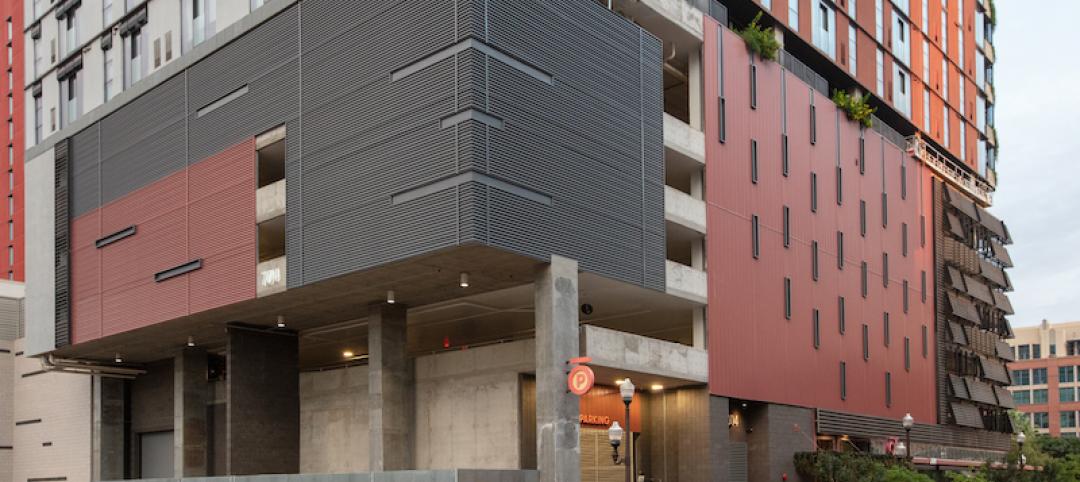Demand for multifamily housing is expected to remain strong in the foreseeable future. But multifamily construction, which has been well above “normal” levels, is likely to slow a bit, which could impact rental rates.
At the recent International Home Builders Show in Las Vegas, the National Association of Home Builders (NAHB) unveiled its latest projections for home starts and sales. The association’s members had just come off of a year in 2014, when single-family home sales jumped by 29.3% to 436,000 units, according to Census Bureau and National Association of Realtor estimates. Builders started a total of 993,000 homes in 2014, 6.7% more than the previous year.
Over the past few years, housing starts have fallen short of NAHB’s predictions about a housing recovery. Last year, single-family starts were just north of 638,000 units, or about 3% more than in 2013. But the association now thinks housing is poised to take off in 2015, and expects single-family starts to rise by 26% to 804,000 units.
NAHB is less gung-ho about multifamily construction, which “has been producing more units than in previous cycles,” observed David Crowe, the association’s chief economist. His forecast shows multifamily starts reaching 358,000 units in 2015, or only 1.7% more than last year. In 2016, the association expects multifamily starts to hit 361,000 units, or just 0.8% more than the starts in 2015.
Looked at another way, NAHB expects multifamily starts from the third quarter of 2014 through the end of 2016 to be 105% of “normal” production (“normal” being based on the average of quarterly production in the years 1995 through 2003). Over that same period of time, NAHB sees single-family starts going from 49% of normal production (which it remains convinced lies somewhere between 1.3 million and 1.4 million units) to 90%.
What remains to be seen is where the equilibrium between multifamily construction and demand finally settles. The vast majority of multifamily development is currently for rental properties. Despite low interest rates, and predictions that younger adults still want to own homes eventually, rental options remain attractive to a lot of people, particularly those who prefer to live nearer to urban centers.
But if construction slows, and rents escalate in response to scarcer availability, multifamily could reach a point of diminishing return that pushes renters into the buyer column quicker.
Related Stories
Mixed-Use | Apr 22, 2022
San Francisco replaces a waterfront parking lot with a new neighborhood
A parking lot on San Francisco’s waterfront is transforming into Mission Rock—a new neighborhood featuring rental units, offices, parks, open spaces, retail, and parking.
Multifamily Housing | Apr 20, 2022
A Frankfurt tower gives residents greenery-framed views
In Frankfurt, Germany, the 27-floor EDEN tower boasts an exterior “living wall system”: 186,000 plants that cover about 20 percent of the building’s facade.
Multifamily Housing | Apr 20, 2022
Prism Capital Partners' Avenue & Green luxury/affordable rental complex is 96% leased
The 232-unit rental property, in Woodbridge, N.J., has surpassed the 96 percent mark in leases.
Senior Living Design | Apr 19, 2022
Affordable housing for L.A. veterans and low-income seniors built on former parking lot site
The Howard and Irene Levine Senior Community, designed by KFA Architecture for Mercy Housing of California, provides badly needed housing for Los Angeles veterans and low-income seniors
Market Data | Apr 14, 2022
FMI 2022 construction spending forecast: 7% growth despite economic turmoil
Growth will be offset by inflation, supply chain snarls, a shortage of workers, project delays, and economic turmoil caused by international events such as the Russia-Ukraine war.
Wood | Apr 13, 2022
Mass timber: Multifamily’s next big building system
Mass timber construction experts offer advice on how to use prefabricated wood systems to help you reach for the heights with your next apartment or condominium project.
Codes and Standards | Apr 13, 2022
LEED multifamily properties fetch higher rents and sales premiums
LEED-certified multifamily properties consistently receive higher rents than non-certified rental complexes, according to a Cushman & Wakefield study of two decades of data on Class A multifamily assets with 50 units or more.
Multifamily Housing | Apr 7, 2022
Ken Soble Tower becomes world’s largest residential Passive House retrofit
The project team for the 18-story high-rise for seniors slashed the building’s greenhouse gas emissions by 94 percent and its heating energy demand by 91 percent.
Multifamily Housing | Apr 5, 2022
New Covenant House New York contains multiple services for youth in crisis
The new Covenant House New York, a crisis shelter for homeless youth in the Hell’s Kitchen neighborhood, provides a temporary home and multiple services for young people.















